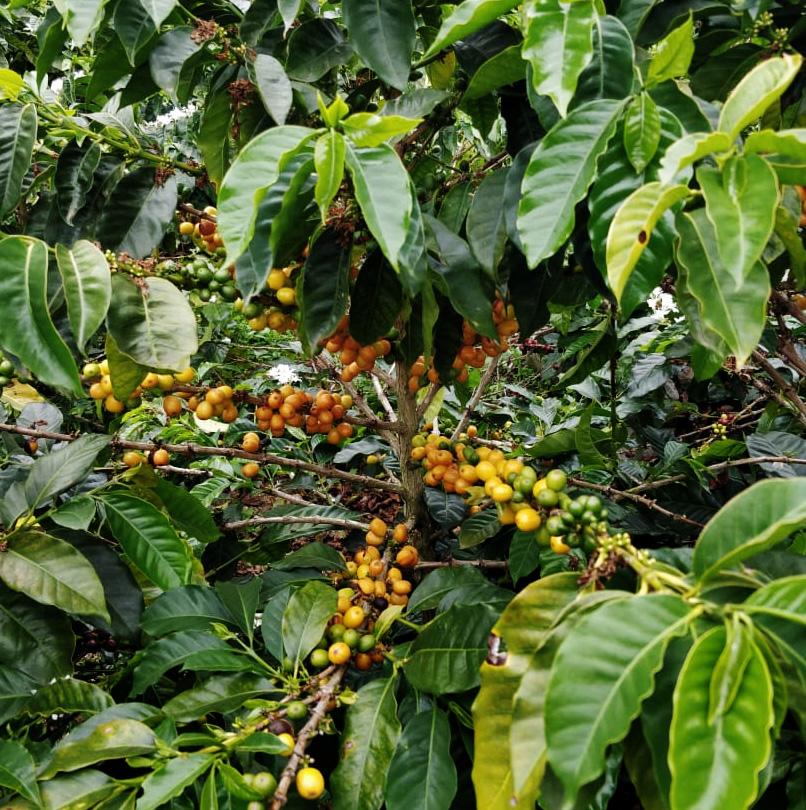The other traditional varieties commonly grown in Guatemala, mutations or hybrids of Typica و Bourbon, share their parents’ susceptibilities to leaf rust and other diseases. The most common of these in Guatemala are Caturra و Catuaí, along with a smaller amount of Pache. These varieties are usually grown because, compared with Typica و Bourbon, they produce higher yields or are more tolerant to certain climatic conditions.
Caturra is a dwarf mutation of Bourbon. First identified in Brazil, it was introduced to Guatemala in the 1940s. Caturra trees have closely spaced branches and grow to a maximum of 1.8 metres (almost 6 feet) tall. Dwarf plants such as Caturra can be planted more densely and tend to produce more fruit per tree, resulting in higher yields.
 A branch of Caturra showing the densely packed clusters of berries that contribute to its high yield potential
A branch of Caturra showing the densely packed clusters of berries that contribute to its high yield potential
Caturra also tolerates drought and direct sunlight, and it grows best with fertiliser, so it is particularly suited to commercial full-sun plantations, where it produces good yields of up to 45 quintales per manzana (2,930 kg of parchment per hectare or 2,614 lbs per acre). Like Bourbon, it produces very good cup quality and ripens early in the season but is susceptible to leaf rust and other diseases. In Guatemala, it’s adapted to lower elevations of 600–1,300 metres (1,970–4,270 feet) above sea level (Anacafé, 2019).
Pacas, which originated in El Salvador, and Villa Sarchí, which originated in Costa Rica, are also dwarf mutations of Bourbon. These varieties are sometimes grown in Guatemala, and feature similar agronomic qualities to Caturra.
 Ripening cherries on a Yellow Pacas tree. Like Caturra, Pacas is a dwarf variety and produces good yields.
Ripening cherries on a Yellow Pacas tree. Like Caturra, Pacas is a dwarf variety and produces good yields.